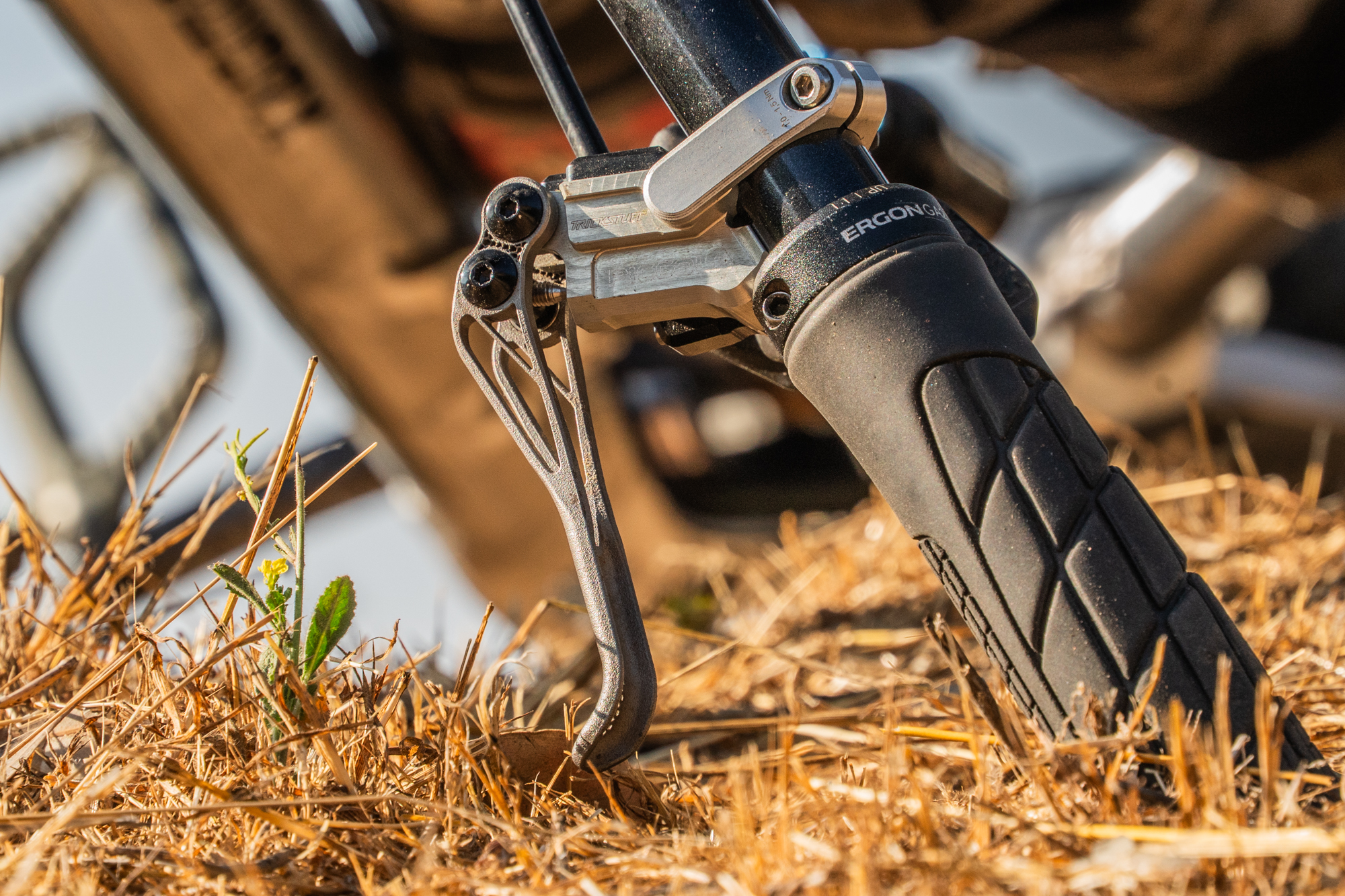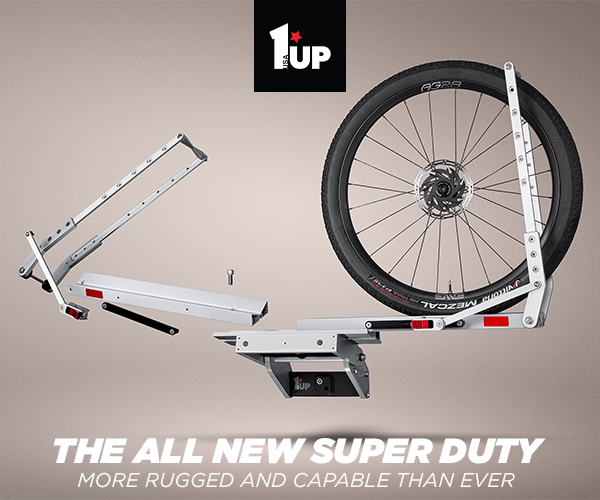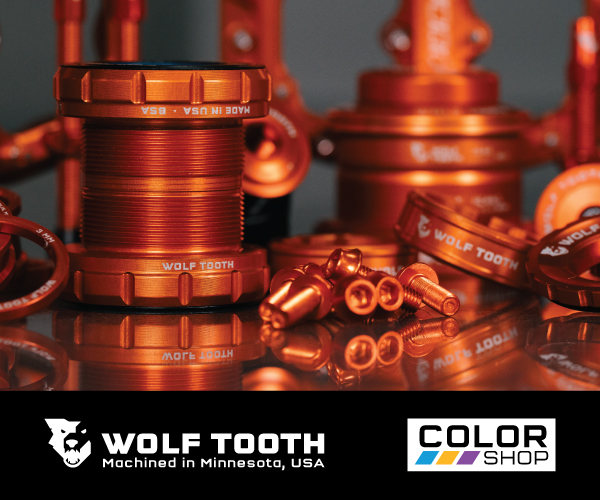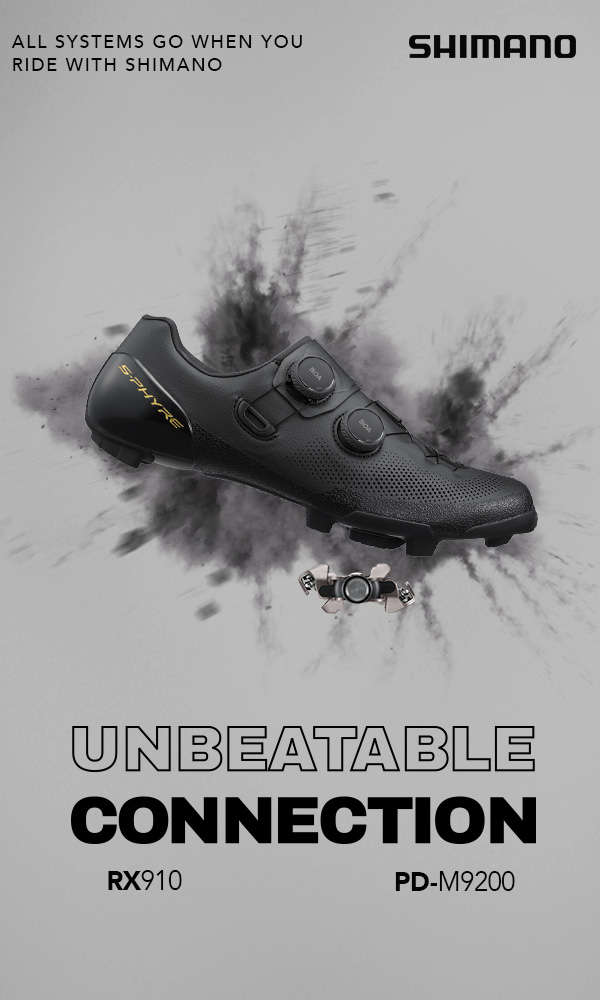The tiny Trickstuff Piccola brakes were first called out to Travis from a tiny booth at Eurobike 2017, but the tiny German brand that made them was slow to expand into the US. Now, after being acquired by DT Swiss in December of 2021, Trickstuff is finally scaling up. There have been some growing pains, which we’ll get into, but from first squeeze, we can assure you these were worth the wait.

I’ve dreamed about having a set of Trickstuff brakes for nearly a decade. Not because they’re rare, beautiful, European, and exorbitantly expensive. I’ve dreamed about them because I’ve tried them – only for a few memorable minutes in a Eurobike convention hall, but that’s all it took. Aside from maybe the moment I first held a Super Nintendo controller, my index fingers had never experienced anything so transcendental. Trickstuff brakes combine the solid build of a Hope Tech 4, the light touch of a Hayes Dominion, and the effortless power of a Shimano Saint.




In varying proportions, those traits apply to all Trickstuff brake models, from the DH-ready Maxima, to the all-mountaineer Direttissima, to the overachieving Piccola HD Titanium, or the featherweight Piccola Carbon. Each can be paired with any one of Trickstuff’s pad compounds or rotor types. The Maxima brakes are deep in the gravity category, so The Radavist will probably skip them, whereas the Piccola Carbons are a bit too far on the other end of the spectrum. I do have a Direttissima brake on deck for review, but you’ll just have to wait for that. I decided to start this party with the Piccola HD Titanium, because look at it.

The lever resembles a chunky little crystal that grew out of a handlebar, and then sprouted a delicate pewter leaf. Like Superman’s Fortress of Solitude with a roof designed by HR Giger.
On the four-piston Piccola HD that I tested, the lever blade is made of 3D-printed titanium. I initially thought this application of additive manufacturing was purely ornamental; a way to further boost the Trickstuff cachet. Although that’s probably part of it, Trickstuff claims the titanium blades are stronger than aluminum, and much stronger carbon.
They’re also stiffer and grippier than carbon, which I can heartily confirm. That, combined with the wide stance of the pivot bearings, is what keeps these lightweight brakes from feeling like lightweight brakes. XC offerings from Magura, Formula, and even Shimano have historically felt a bit dainty. The Piccola HD is not dainty. It’s sophisticated.
Trickstuff Piccola HD Quick Hits
- 3D-printed titanium lever blades
- 4-piston caliper
- Available in silver or black, with optional mix-and-match accents
- 14 mm and 17 mm stainless steel pistons
- Plant-based Bionol fluid
- Shimano I-Spec EV or SRAM Matchmaker X control mounts available
- Front brake weight (without caliper adapter, rotor, or dropper lever mount) 213 g
- Rear brake weight (without caliper adapter, rotor, or shifter mount) 229 g
- Replacement titanium lever blade: $129.90
- Integrated shifter / dropper mounts: $24.90 – $34.90 each
- Ultra Light 2.05 mm rotors (tested): $67.10 (180 mm) $73.21 (203 mm)
- Front and rear brake set, without caliper adapters or rotors: $1,180
Now, before I go any further, let’s talk about a recent change at Trickstuff. The small German manufacturer was acquired by DT Swiss in early 2022 with no publicized changes until spring of 2025 when they expanded sales into the US. But soon after I received these brakes for review, DT announced it would be closing the Freiburg, Germany, facility where Trickstuff brakes had been manufactured. Many of the employees were let go. Production will be relocated to an existing DT factory in Poland. Meanwhile, design and marketing will happen in Switzerland, and sales and customer service will be based in DT’s Germany office.
If you’ve lived through a merger, you know about “redundancies.” I sure do. And even though it can be devastating for the people involved, I get why it happens. It makes sense for DT Swiss to integrate production into their much larger-scale operation. On their own, Trickstuff struggled to keep up with demand. There were often long waiting lists for their brakes. So, a primary goal in the DT Swiss acquisition was an increase in bandwidth. And DT Swiss knows a bit about bandwidth. But this is a murky proposition for a brand like Trickstuff.

The reason their brakes are so sought-after – and so expensive – is the craftsmanship behind them. Now, the design and price will remain the same, but the craftspeople have been replaced. Is Trickstuff still Trickstuff? And does my review even matter if the brakes I rode weren’t made by the same people who’ll make the ones you might buy? I asked DT Swiss that exact question, and the response wasn’t exactly satisfying.
I had hoped for details on how technicians in Poland would be trained in the Trickstuff ways. Or what equipment might get transported and duplicated from the Freiburg facility. But DT Swiss was only able to tell me that some Trickstuff staff has been maintained. Presumably, that staff will play a role in overseeing quality control, but that’s just a blind guess on my part. I couldn’t pry any useful information out of DT’s tight lips.
For what it’s worth, that facility is where DT Swiss does the majority of their manufacturing. That includes their reliable aluminum rims, their high-volume wheel assembly, as well as their boutique suspension components. They should be more than capable of taking on Trickstuff. Maybe this is just wishful thinking, but just because something is produced on a larger scale doesn’t mean quality has to go down. I’d much rather own a Toyota than a Maserati. This DT / Trickstuff deal may be akin to a Maserati made by Toyota. That’s all I can leave you with on this subject. That, and my belief that the dream of Trickstuff is too good to let die, because these brakes truly are a dream.


Construction
The raw materials Trickstuff uses are not changing. The caliper and lever bodies are machined from 7075 aluminum, anodized inside and out, and painstakingly polished for smoothness. The lever pistons use a particularly durable POM plastic, and the caliper pistons are hollow stainless steel. Beyond just being far more chip-resistant than ceramic pistons, Trickstuff’s stainless steel pistons have a large cavity to encourage airflow behind the pads. Speaking of pistons, the caliper on the Piccola HD pairs 14 mm and 17 mm pistons. And of course, the Piccola HD has the iconic 3D-printed titanium lever blade.
Installation
The Trickstuff Piccola brakes are a bit of an Erector Set. It probably didn’t help that I needed a SRAM Matchmaker X mount for my dropper lever and Shimano I-Spec EV mount for my shifter. In each case, I had to detach the control before removing the lever if I didn’t want to slide the grip off first. But all things considered, it’s pretty impressive that Trickstuff maintained compatibility and removability without the added bulk of hinges or faceplates. Once installed, it’s remarkably sleek. That’s thanks in part to the skinny M4 bolt and skinnier 3mm hex head, which actually offered ample clutch power. I don’t own a torque wrench that measures down to the recommended 1.0 – 1.5nm, but I’m sure I’m well within the range with no danger of twisting or stripping.


Trickstuff does not use disposable compression olives to connect their levers. There’s just a barbed fitting with a threaded cover to lock it in. Not only is it satisfyingly logical, it’s actually quite useful. Bikes with internal cable routing may require you to shorten your hose by several millimeters if you ever have to remove it from the frame. Not a common task, but a frustrating one that’s made more frustrating if you end up having to spend $40 to replace a perfectly good hose. Once everything’s connected, bleeding is relatively straightforward. You just need a couple specific fittings from Trickstuff.


Another easily overlooked feature that deserves a lot of looks is the Piccola lever’s hose-angle adjustment. Although I famously reject the hiding of our housing and hoses, Trickstuff has a genius way to hide them if you want. Similar to the adjustable banjo on a caliper, the Piccola lever allows some limited control over hose angle. If your bike uses headset routing, you can actually point the hose at the headset. But if it doesn’t, you can maintain that traditional arch.


Configurations
For a breakdown of Trickstuff pads, check out my review from a couple years ago. When reviewing the Piccola brake, I opted for their Standard pad compound for a neutral baseline. And I’m using their more skeletal UL disc, but in the bulkier 2.05 mm thickness. I’m not a scientist, but I kinda like the logic of a thicker but better-vented braking surface. It suits the Piccola’s balance of low weight and high power.
Trickstuff Piccola HD Ride Impressions

At the risk of putting more value on how this brake feels than how it works, I have to briefly gush about the moment I wiped off the fluid and squeezed these titanium blades for the first time. Before the pads hit, the action is absolutely feather-light. There’s no discernable breakaway force to get the seals moving. It’s all oil and bearings, as far as I can tell. And I’d say the freestroke depth is “average.” Not as immediate as Hayes or a dialed-down Hope, but tighter than Shimano or SRAM. Then, once you hit that bite point, the flex is similarly mid-pack. Not as firm as a SRAM Code, but firmer than Shimano or Magura. Most remarkable, though, is how it remains smooth after the pads hit. There’s no stiction, no friction. It feels really good.

And the subtle added grip of that titanium blade is surprisingly comforting. When I went gloveless, it eliminated the unpredictable stick-and-slip that sometimes comes with smooth aluminum or carbon. It almost felt organic, like canvas. And that phenomenon persisted with gloves, which is how I normally ride. There may be two opposing camps on this issue: one that wants their finger to slide across the lever, and the other that wants it to feel glued down. I like the glued-down feel. I tend to tap my brakes, and the titanium’s added grip makes for fewer variables.
Of course, braking technique depends largely on braking power. Tapping may turn to clenching when your brake’s power runs out. If you’ve ever ridden a capable bike with underspecced brakes, you know the feeling of white-knuckling into a sudden turn or down a steep chute. It’s not fun, but maybe it’s not the end of the world. That is, as long as it’s not happening all the time.


If it is happening all the time, there are brakes for that. They’re just not for me. The SRAM Maven showed me there can be such a thing as too much power. It was great for those turns and chutes, but it was unsettling other times. I found the power could ramp up too steeply for my trails. It was hard to accept that I’m simply not rad enough for the world’s most powerful brake. But once I did, it forced me to take a closer look at what I’d want out of a slightly less powerful brakes. There’s modulation, of course; how easy it is to find the ideal point along its powerband. But there’s also the width of that powerband; how powerful it can be without being too powerful. On those two metrics, the Trickstuff Piccola performed better than any other brake I’ve ridden.


If you’re just after peak power, linkage-driven designs like SRAM’s Swinglink and Shimano’s Servo-Wave are clever ways to get it. Their hidden mechanisms ramp up the mechanical advantage late in the stroke. But they make for a “lumpy” lever feel and less consistent power delivery. In contrast, the Trickstuff Piccola uses a simple direct connection between lever and cylinder. Beyond just being lighter and smoother, it naturally creates a more linear power curve. I found that allowed me to be a bit more brainless when throttling my speed through rough sections and into gentle turns. The Piccola’s moderate firmness played an important role in that; my fingers weren’t just hitting a wall as soon as the pads hit the rotor. Thanks to the heightened sensitivity we all acquire when our adrenaline is pumping, I could feel the tiny changes in lever position as I adjusted the pressure. Without being mushy, these levers made it easy to fine-tune the force.


That’s mostly just a long-winded way of saying the Trickstuff Piccola brakes have good modulation. That’s also true of the SRAM Motives I recently reviewed. But on the Piccola, that effect is heightened by the feel I keep going on about. Hayes brakes also have a good feel, thanks largely to their light touch. But that light touch is mostly just in their freestroke. Trickstuff Picola brakes, on the other hand, are smooth all the way down. This is why the Trickstuff feel is more than just feel; it’s also function. Because there was so little stiction, even under heavy braking load, it was easy to get the exact amount of power I wanted… at least to a point.
After all, the Piccola HDs are still technically on the lighter side of the Trickstuff catalog. I occasionally managed to land myself just inside the borders of white-knuckle territory. Not in a frightening way, like if I was running budget SRAM Guides on an enduro bike – more in a reality-check way. In the rare moments when I felt myself reaching the end of what the Piccolas could provide, I just had to update my priorities. Calm down, reset, and get through the section. I always managed. There just wasn’t an extra 5% on reserve if, say, I suddenly needed to lock ‘em up mid-rock-garden and throw it sideways to change directions. If that’s a common occurrence for you, maybe you’re rad enough for a SRAM Maven. If it’s not, maybe the Trickstuff Piccola is perfect… except for the price.


This is one of those product reviews where I think it’s prudent to end with a discussion on value. It’s normally safe for you to assume that, if we write positively about a product, we don’t think it’s a rip-off. For example, I’ll look anyone in the eye and tell them that a $6,000 Spot Mayhem is worth every penny. The important question is what things you may be giving up to afford one, and whether those things are worth more. Someone just reached out to me for help choosing between an entry-level Mayhem and a higher-specced YT Jeffsy. Given his preferences, I thought that Mayhem would offer a more ideal suspension feel. But in the end, I suggested the Jeffsy would offer him an overall better experience. Both bikes are worth the money, but within the target price ceiling, one was a better choice.
Now, if your target price ceiling for a couple new sets of brakes is $300 or even $600, I’m flattered that you read the entire review of these $1,180 brakes anyway! But more importantly, please don’t take my praise for the Trickstuff Piccola as an argument that you should find a way to double or triple your budget. A Hope Tech 4 V4 or SRAM Motive Silver or fancy new XT 4-piston will not disappoint you. But if it is totally reasonable in your reality to spend $1,180 outfitting your bike with new brakes, and you’ve just been waiting for Trickstuff to hit wide in the US market, I’d say they’re worth it.
Pros:
- Light touch
- Light weight
- Unmatched smoothness, even under forceful braking
- Outstanding modulation
- High power-to-weight ratio
- Naturally grippy lever surface
- Clever hose and connection design
- Thick but lightweight rotor options
Cons:
- Expensive
- Fiddly lever and control mounts
- Some uncertainty around recent changes in production facility
See more at Trickstuff









